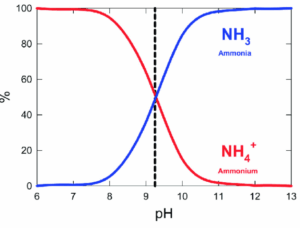The presence of ammonia in sanitary effluents represents one of the main operational challenges in sewage treatment systems in Brazil and around the world. The search for technologies to reduce ammonia in sanitary effluents has grown due to stricter environmental requirements and the need to protect sensitive water bodies.
Ammonia (NH₃/NH₄⁺) is a nitrogenous compound naturally present in sewage due to the breakdown of nitrogenous organic matter (urea, proteins). In the effluent it is in equilibrium between free ammonia (NH₃) and ammonium ion (NH₄⁺), depending on pH and temperature.
As well as being a regulatory parameter, ammonia removal helps to avoid eutrophication processes, toxicity to aquatic biota and operational difficulties in treatment plants. For this reason, knowledge of available technologies is essential for more efficient decision-making and investment.
What is ammonia removal in sanitary effluent?
Ammonia removal consists of transforming or removing the ammonia nitrogen present in sewage. This compound originates from the degradation of nitrogenous organic matter and is found in dissolved form, and can be in the form of free ammonia (NH₃) or ammonium ion (NH₄⁺). The graph below shows the percentage abundance of its forms.
The control and removal of this parameter is carried out to comply with environmental legislation, avoid ecotoxicological impacts and enable the safe reuse of treated water.
Why is reducing ammonia in wastewater important?
Acting to reduce ammonia in sanitary effluents is essential:
- Minimize environmental impacts on receiving bodies;
- Avoid excessive consumption of dissolved oxygen, which can result in fish kills;
- Prevent eutrophication and excessive algae proliferation;
- Meeting increasingly restrictive regulatory standards;
- Enabling the industrial, urban and agricultural use of treated water.
In the global context, countries like Germany, the United States and Japan have ambitious targets for reducing total nitrogen, driving constant technological advances. In Brazil, some regions have been updating their environmental standards, driving the adoption of more efficient systems.
Main technologies for reducing ammonia in sanitary effluent
The following are the main approaches adopted in Brazil and worldwide to reduce ammonia in sanitary sewage:
1. Biological Processes: Activated Sludge, MBBR, MBR
Conventional Nitrification-Denitrification
Conversion of ammonia into nitrite/nitrate (nitrification), followed by its transformation into gaseous nitrogen (denitrification). Widely used in sewage treatment plants (STPs).
2. Physical-chemical processes
Ammonia Stripping
Removal by volatilization in aeration towers. pH adjustment may be necessary to improve efficiency.
Adsorption (Zeolites, Activated Carbon)
Use of porous materials to capture ammonia. Suitable for low concentration flows.
Chemical precipitation Struvite (MgNH₄PO₄-6H₂O)
Reuse of phosphorus and nitrogen in the form of fertilizer.
How to apply technologies to reduce ammonia in sanitary effluent
For practical application, it depends on characteristics such as:
- Ammonia concentration;
- Organic load;
- Establishment of regulatory targets;
- Space available;
- CAPEX and OPEX costs.

Best practices and common mistakes
Good practices
- Monitor ammonia, nitrite, nitrate and DO continuously;
- Maintain control of alkalinity and pH;
- Correctly dimension aeration and detention time;
- Train operators in dynamic adjustments.
Common mistakes
- Underestimating the real nitrogen load;
- Ignore temperature impacts on the process;
- Low synergy in the control of suspended solids and sludge age.
Conclusion
Technologies to reduce ammonia in sanitary effluents are evolving rapidly, driven by environmental demands, improved water quality and sustainability goals. Choosing the ideal solution depends on integrated analyses that consider cost, operation, efficiency and the regulatory context.
Want to understand which technology best suits your application?


